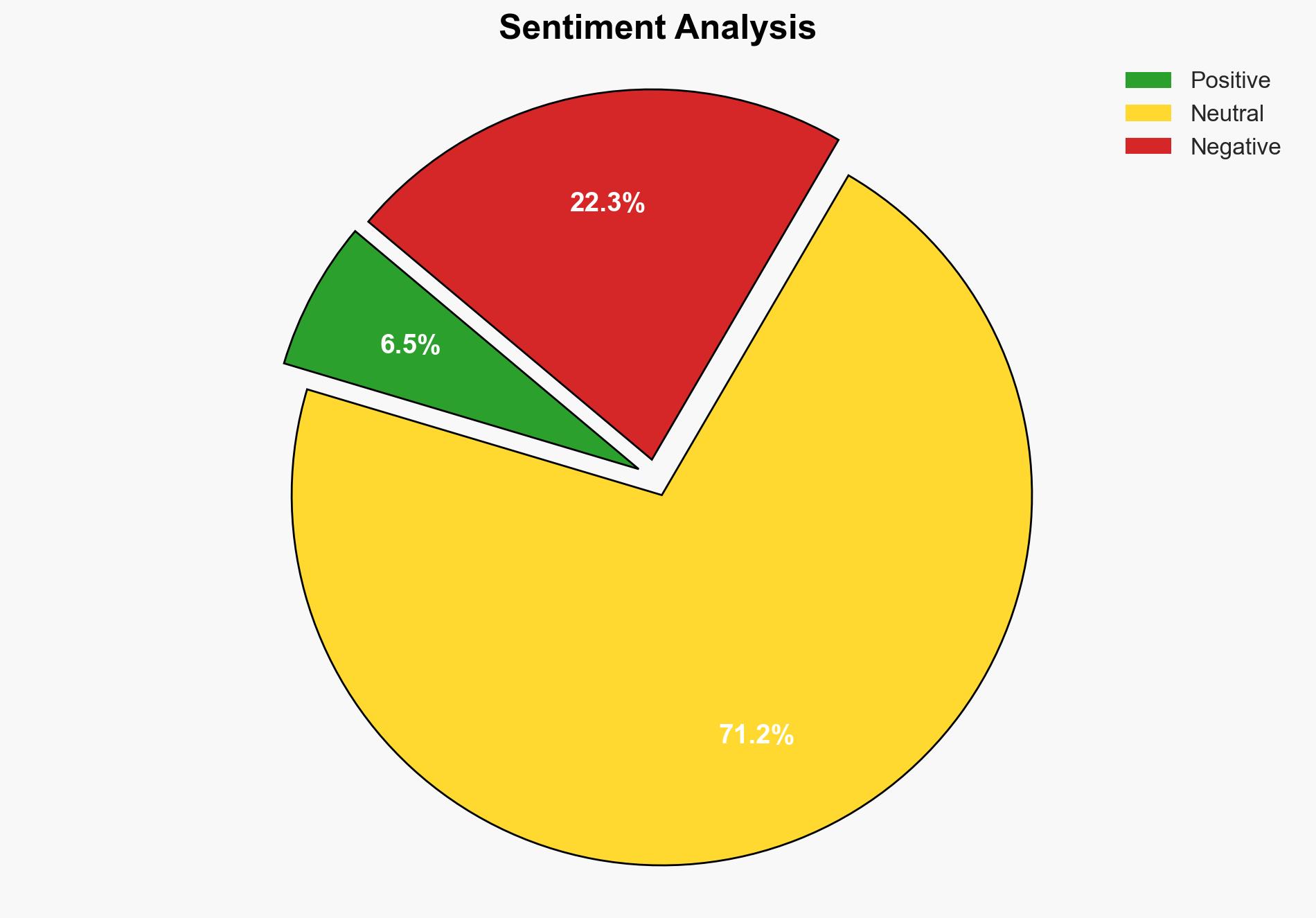Gaza ceasefire in peril as Palestinians struggle amid food shortages – CBS News
Published on: 2025-03-08
Intelligence Report: Gaza ceasefire in peril as Palestinians struggle amid food shortages – CBS News
1. BLUF (Bottom Line Up Front)
The Gaza ceasefire is at risk of collapsing due to ongoing tensions between Israel and Hamas, exacerbated by severe food shortages in the region. The situation is critical as negotiations for a second phase of the ceasefire deal have stalled. Immediate international intervention is necessary to address humanitarian needs and stabilize the region.
2. Detailed Analysis
The following structured analytic techniques have been applied for this analysis:
SWOT Analysis
Strengths: International attention on the ceasefire provides a platform for diplomatic engagement.
Weaknesses: Lack of trust between negotiating parties and internal political pressures.
Opportunities: Potential for renewed peace talks and humanitarian aid influx.
Threats: Escalation of violence and worsening humanitarian crisis.
Cross-Impact Matrix
The instability in Gaza may lead to increased tensions in neighboring regions, potentially affecting broader Middle Eastern geopolitical dynamics. The humanitarian crisis could prompt regional migration pressures and international humanitarian responses.
Scenario Generation
Best-Case Scenario: Successful negotiations lead to a sustainable ceasefire and humanitarian aid access.
Worst-Case Scenario: Breakdown of talks results in renewed conflict and humanitarian catastrophe.
Most Likely Scenario: Prolonged negotiations with intermittent violence and limited aid access.
3. Implications and Strategic Risks
The current situation poses significant risks to regional stability and international security. The humanitarian crisis could lead to increased radicalization and recruitment by extremist groups. Economic impacts include disruptions to trade routes and increased aid dependency.
4. Recommendations and Outlook
Recommendations:
- Facilitate international mediation to resume and sustain ceasefire negotiations.
- Enhance humanitarian aid delivery mechanisms to alleviate food shortages.
- Encourage regional cooperation to address underlying political tensions.
Outlook:
Best-Case: A stable ceasefire with improved humanitarian conditions.
Worst-Case: Escalation into a broader conflict with severe humanitarian consequences.
Most Likely: Continued instability with sporadic violence and limited aid improvements.
5. Key Individuals and Entities
The report mentions significant individuals such as Mustafa Abu Shaaban, Rasha, and Benjamin Netanyahu. Key entities include Hamas and the Israeli military. These individuals and organizations are central to the ongoing developments in the region.





